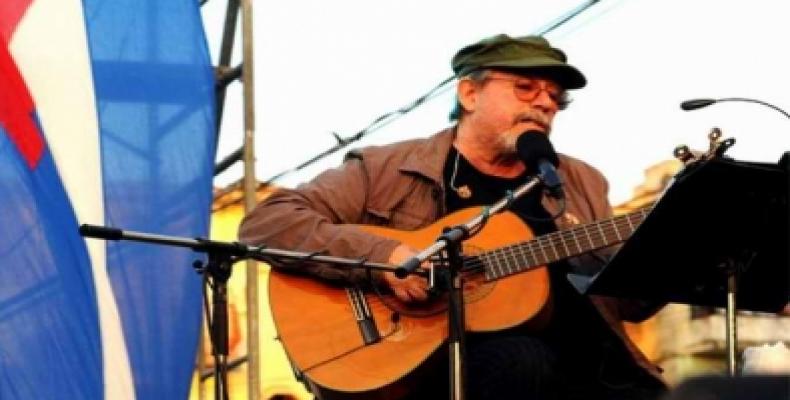Singer song writer Silvio Rodríguez was born on the 29th. of November 1946 in San Antonio de los Baños, south of Havana. Silvio has been correctly deemed to be a protean figure in the landscape of Latin American culture. He inspires and nourishes those listeners in search of songs that are popular and tuneful, but also lyrically ambitious and defiant of genres and conventions.
Silvio’s miraculous body of work and relentless desire to experiment compares easily with the work of John Lennon, Bob Dylan or Stevie Wonder.
When the Revolution led by Fidel Castro triumphed in January 1959, Rodríguez was only 13 years old, and, like most Cubans of his generation, became involved in the new Revolutionary enthusiasm. He participated in the Literacy Campaign held in 1961.
Haydée Santamaría, the revolutionary who participated in the Moncada barracks assault of 1953 and sister of Abel Santamaría, who was tortured and killed after the failure of the assault became a protective mother-figure of the young composer and of several of his colleagues at the time. Casa de las Américas became the home not only for the new Cuban troubadours but also for many other Latin Americans on the left. It was in this institution that Silvio met Pablo Milanés, and Noel Nicola, who would also become famous nueva trova singers and composers that would take Latin America by storm in the 70s.
Some of Silvio’s most political songs, such as the historically flavored ‘Playa Girón’ and the symbolic ‘Unicornio’, were embraced by leftist revolutionaries as anthems that justified and applauded their fight for democracy. The eerie beauty of Silvio’s music, however, transcends any political ideology and he is at his best when singing lyrics of romantic love.
Rodríguez’s musical revolution is regarded as starting in 1975 with ‘Días Y Flores’, a nostalgic, joyful record that made him very popular throughout Latin America. Other masterpieces soon followed, including the more baroque ‘Rabo De Nube’ and ‘Mujeres’, dedicated to all the women in Rodríguez’s life, from his grandmother to his daughter.
After experimenting with salsa combos and symphony orchestras, Silvio returned to his traditional solo guitar and voice format. Silvio Rodríguez continues to sell out stadiums whenever he decides to go on tour.


